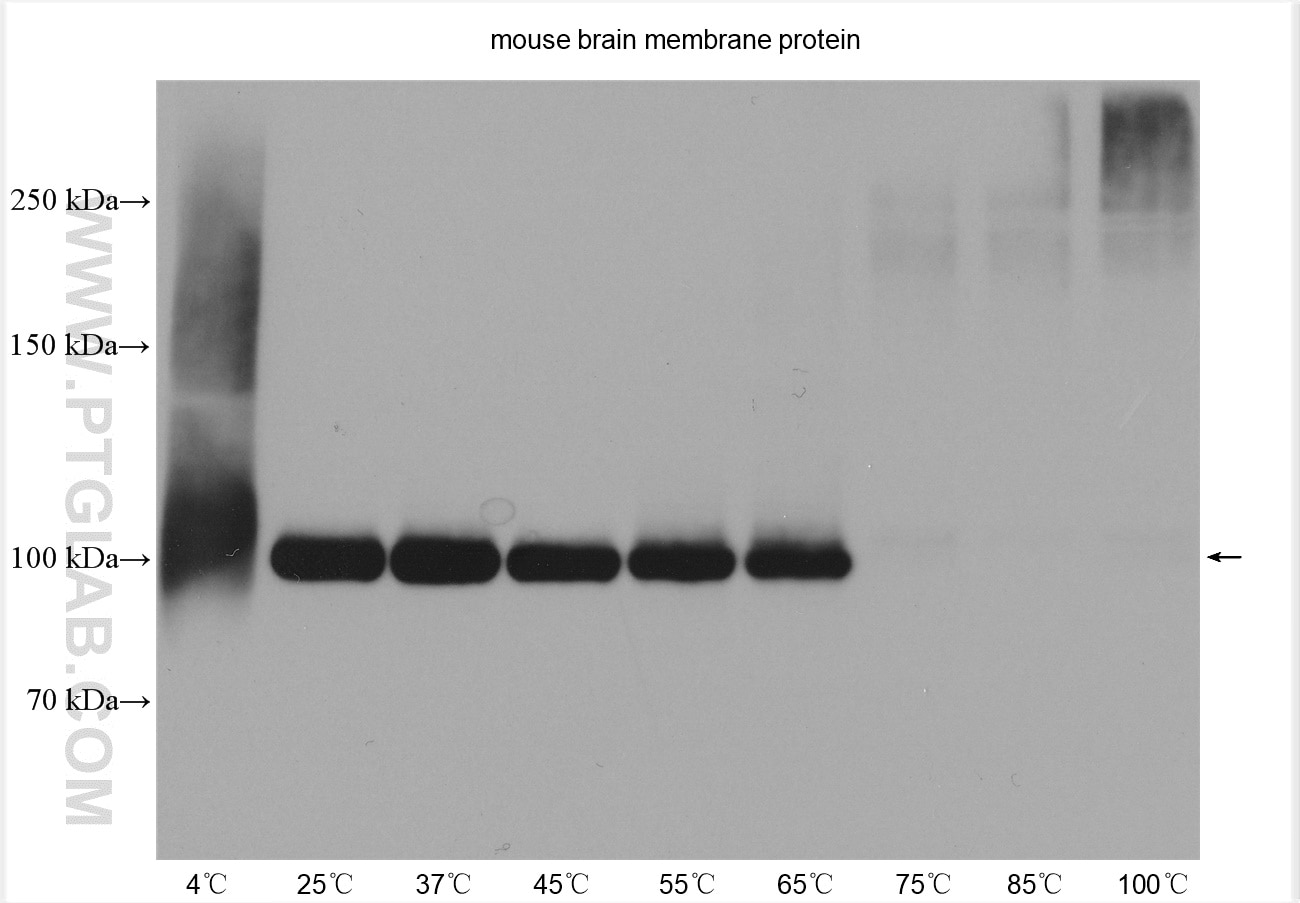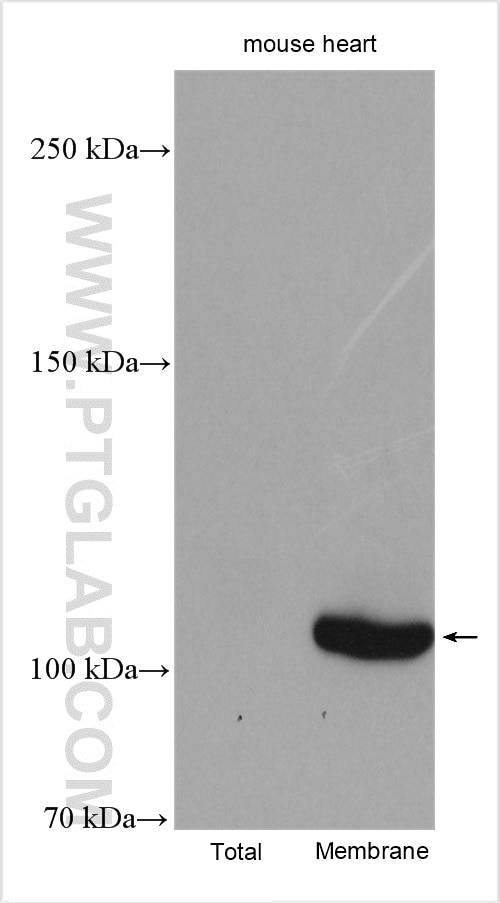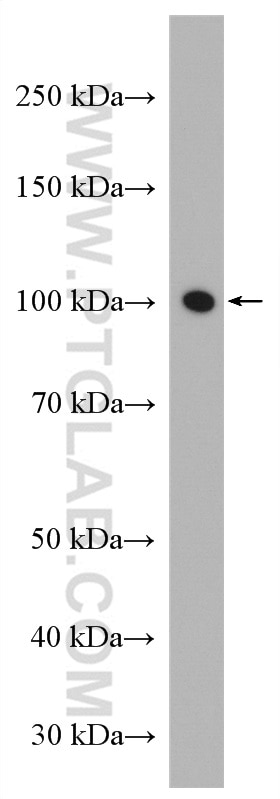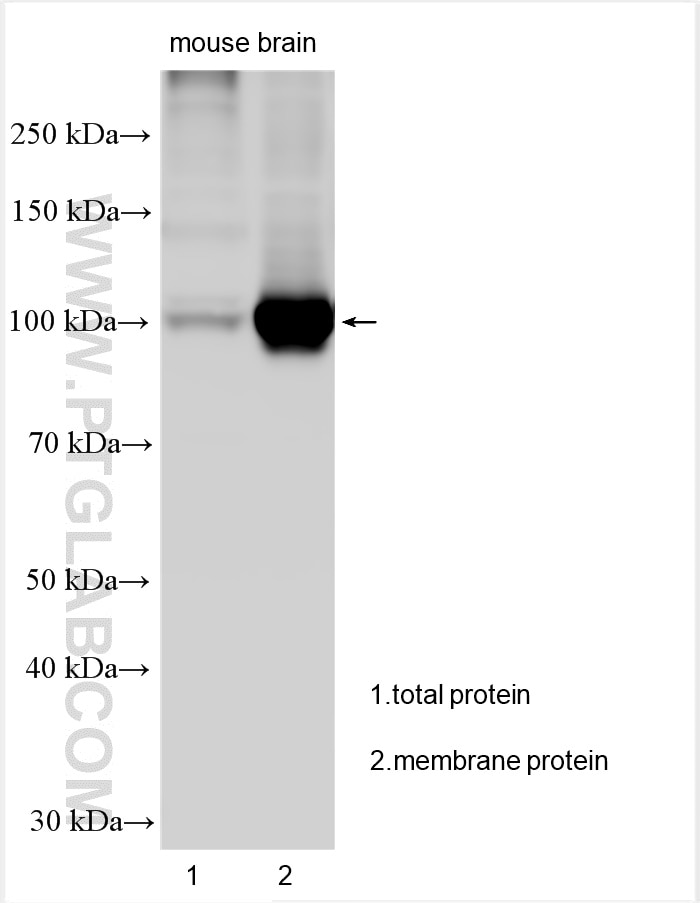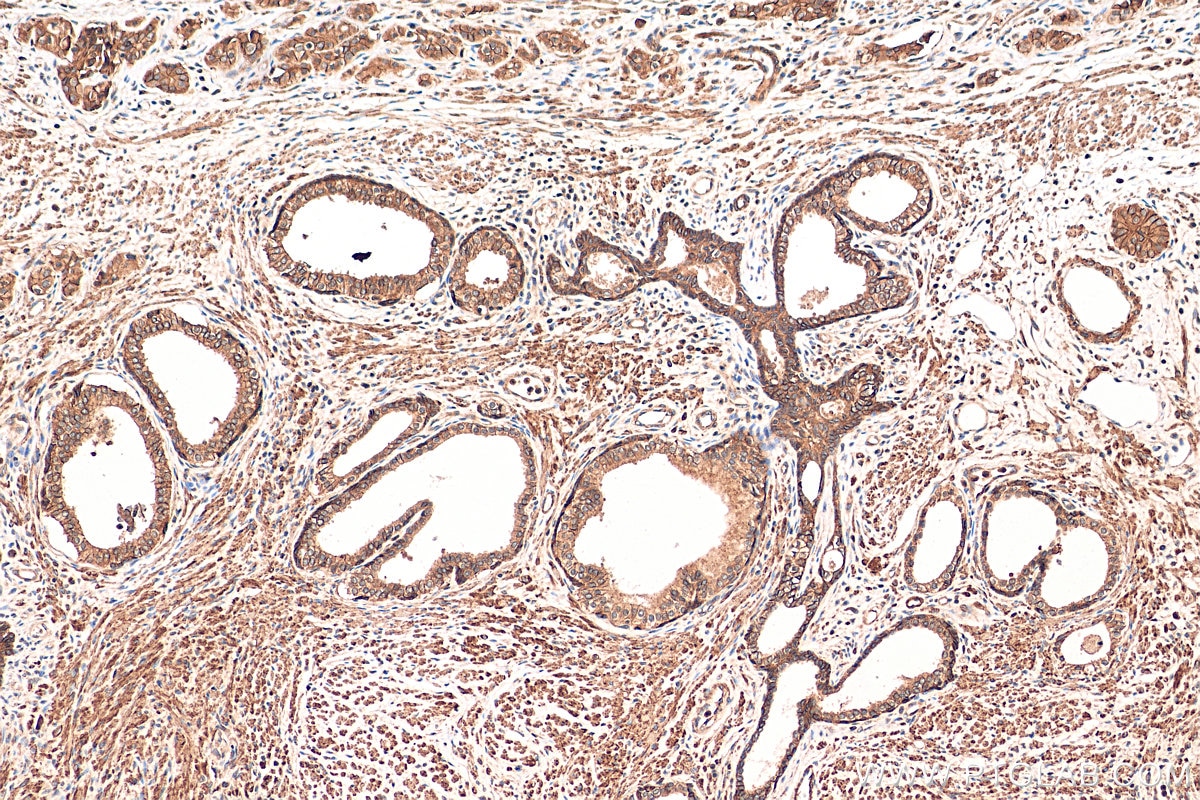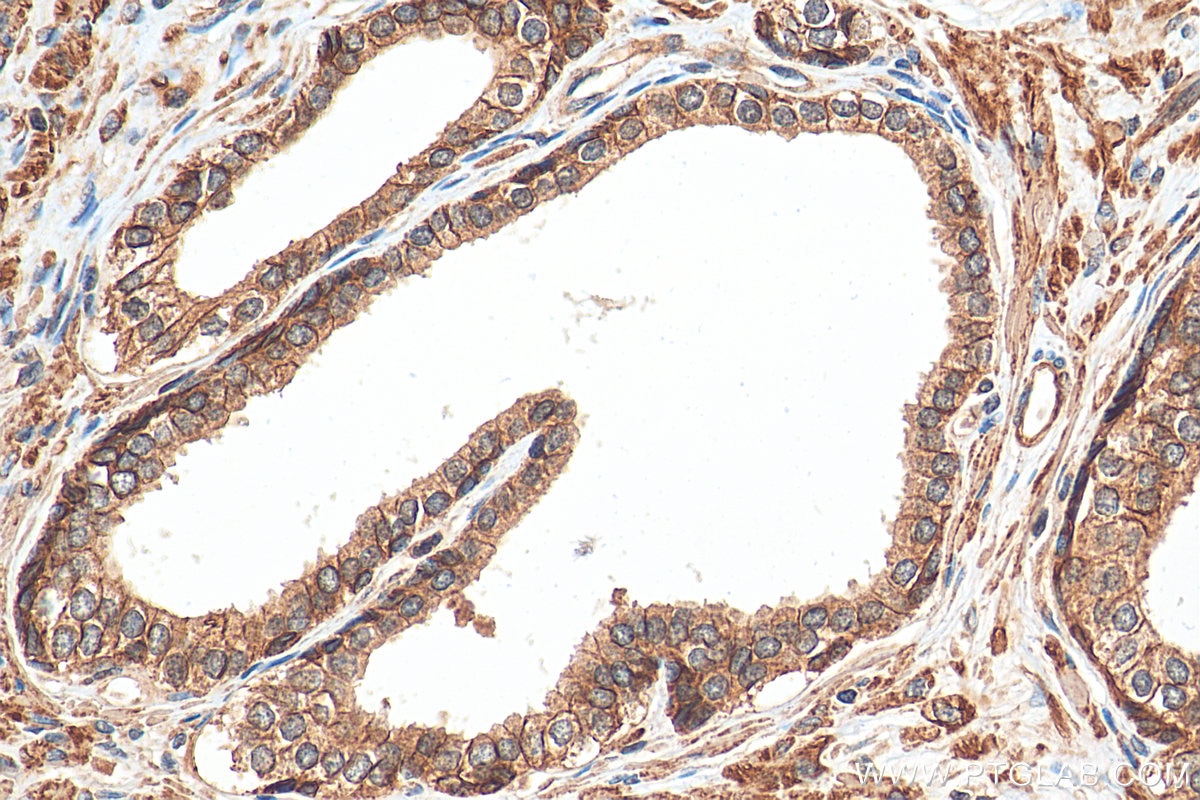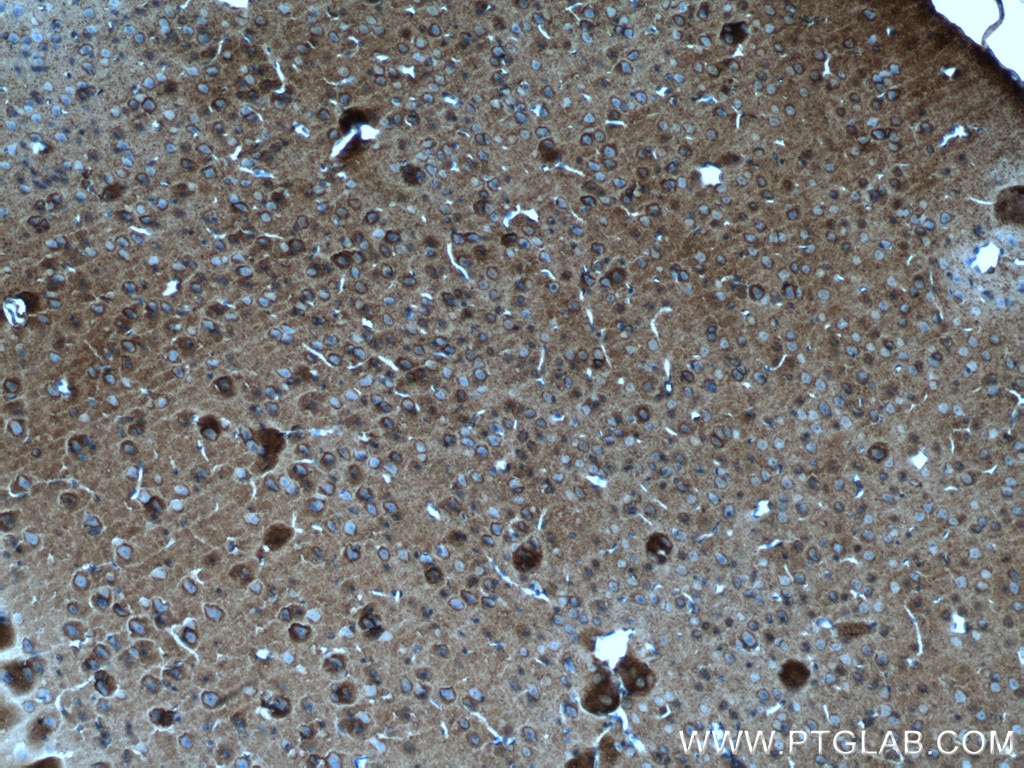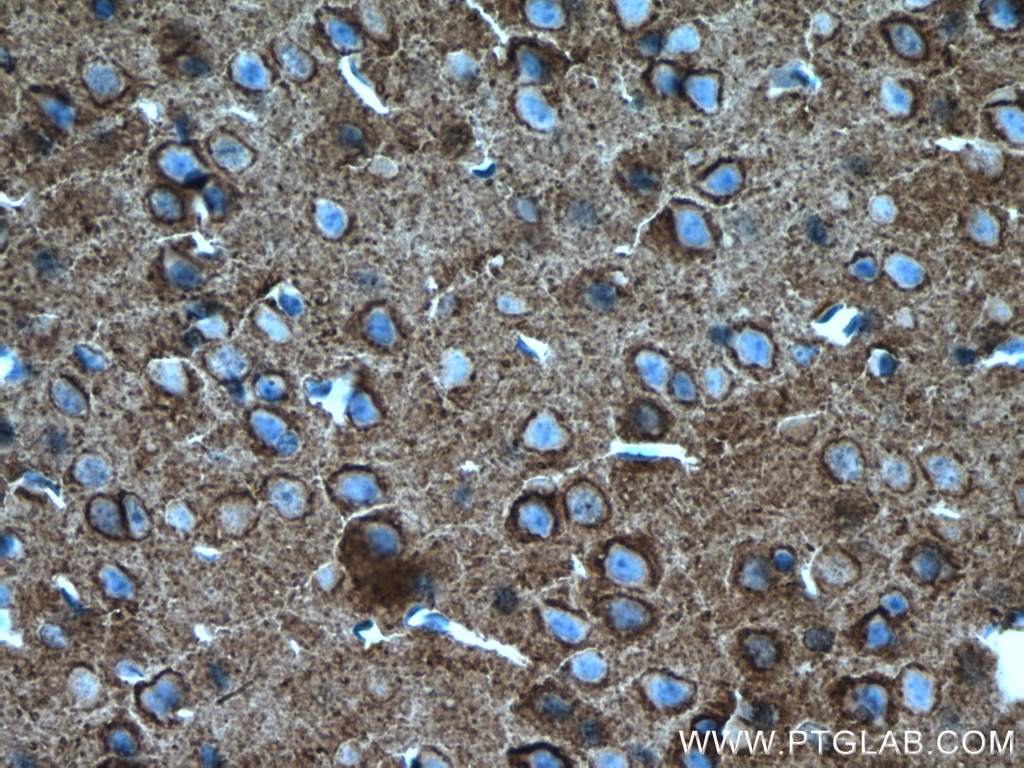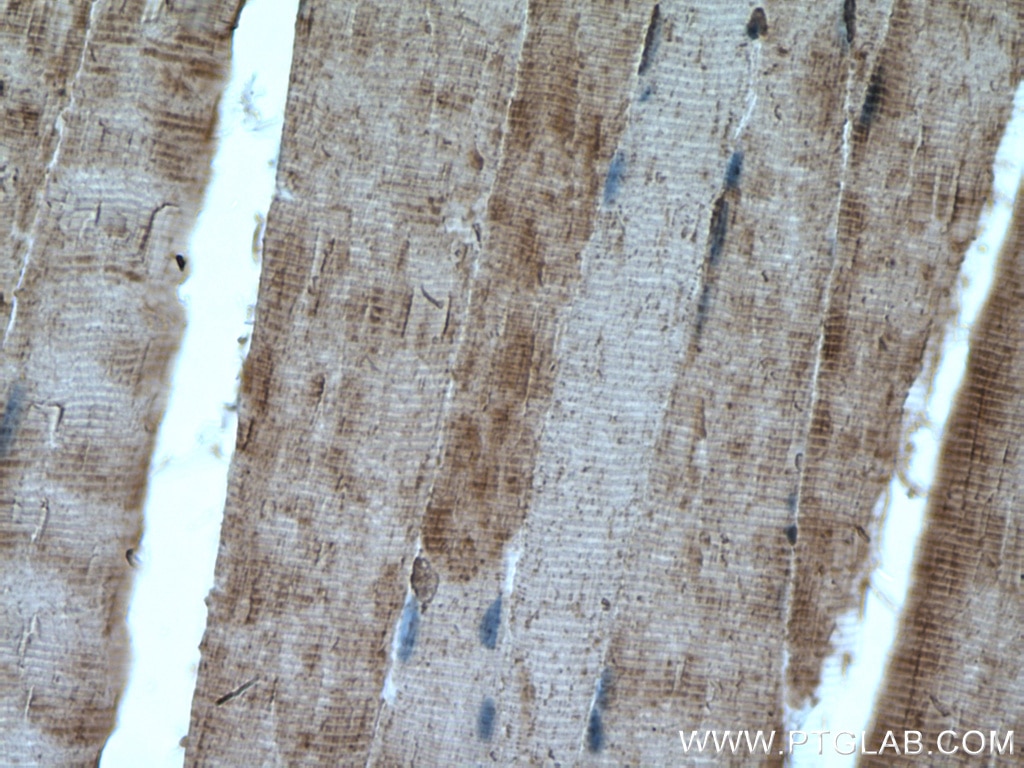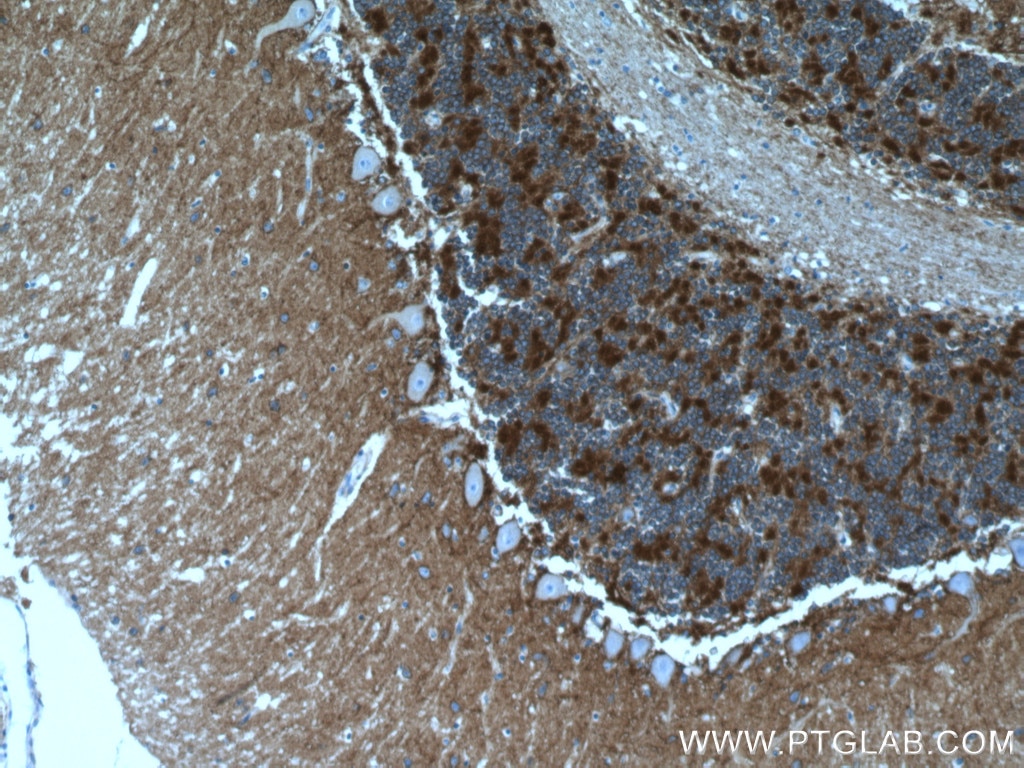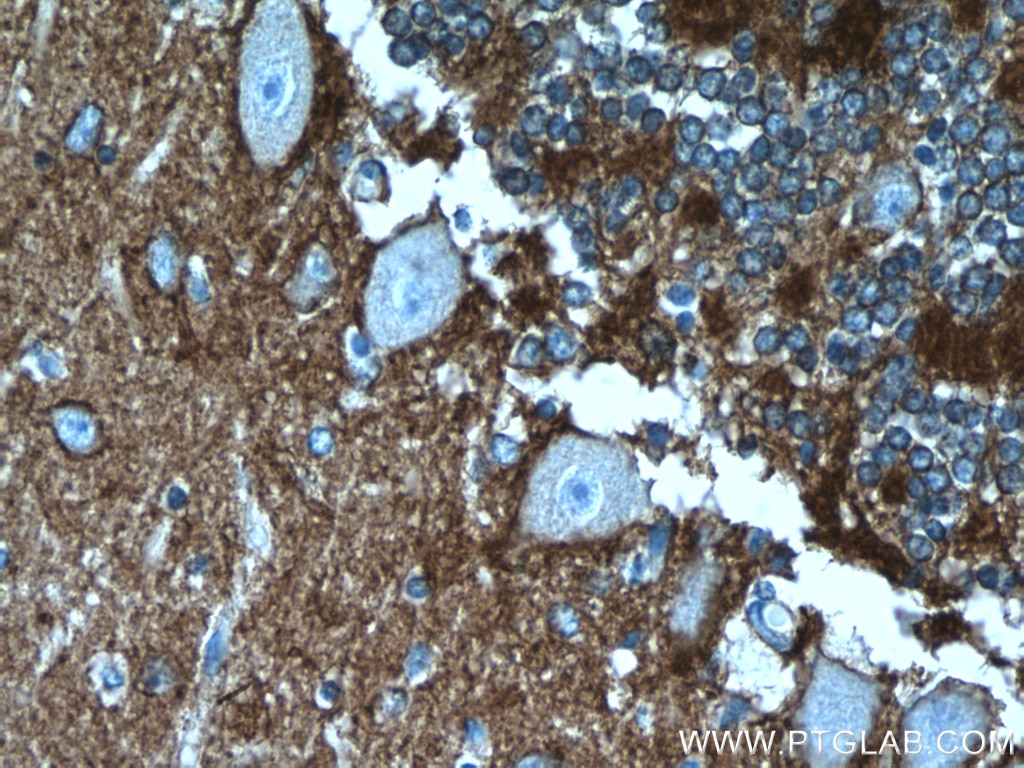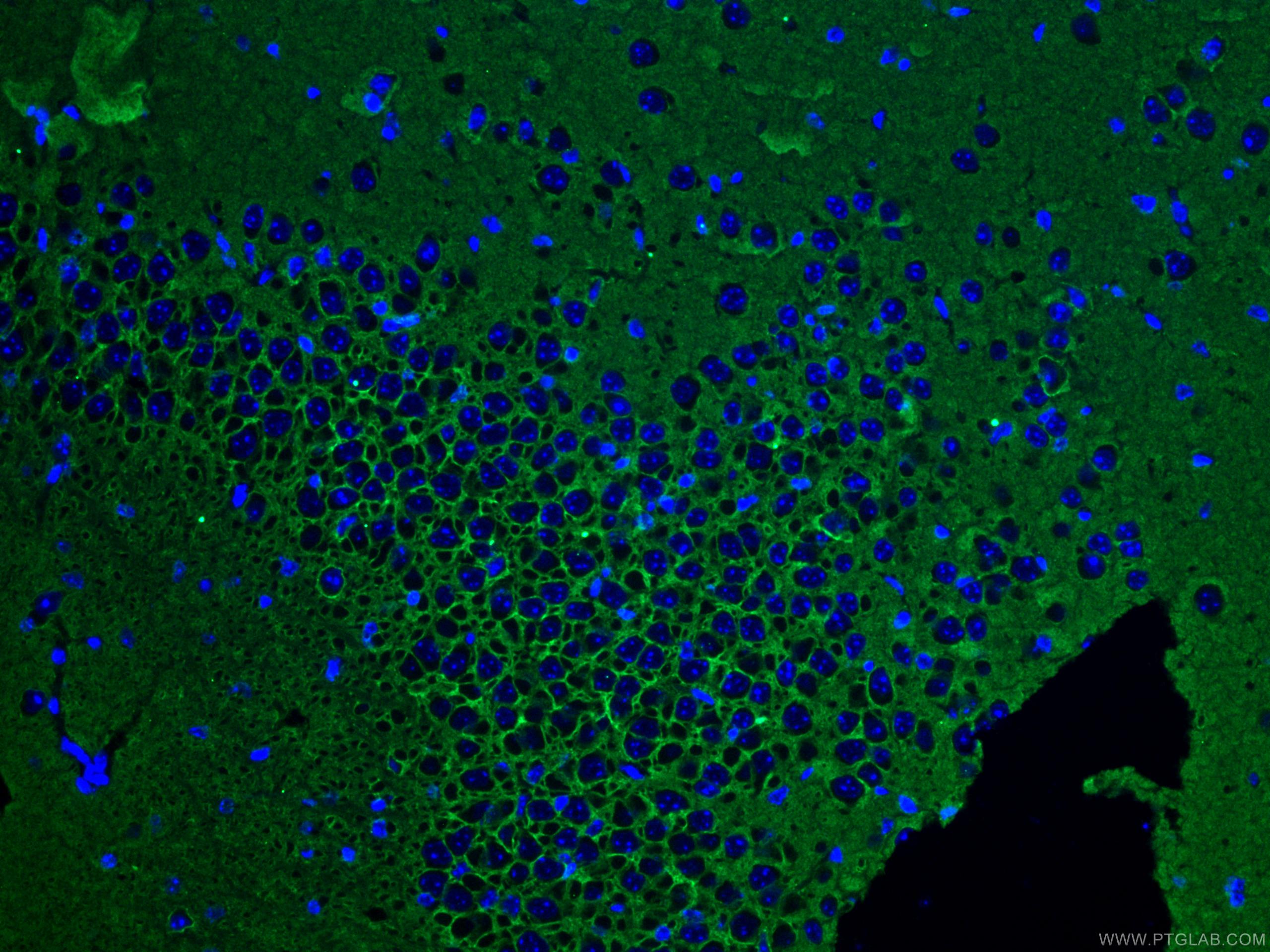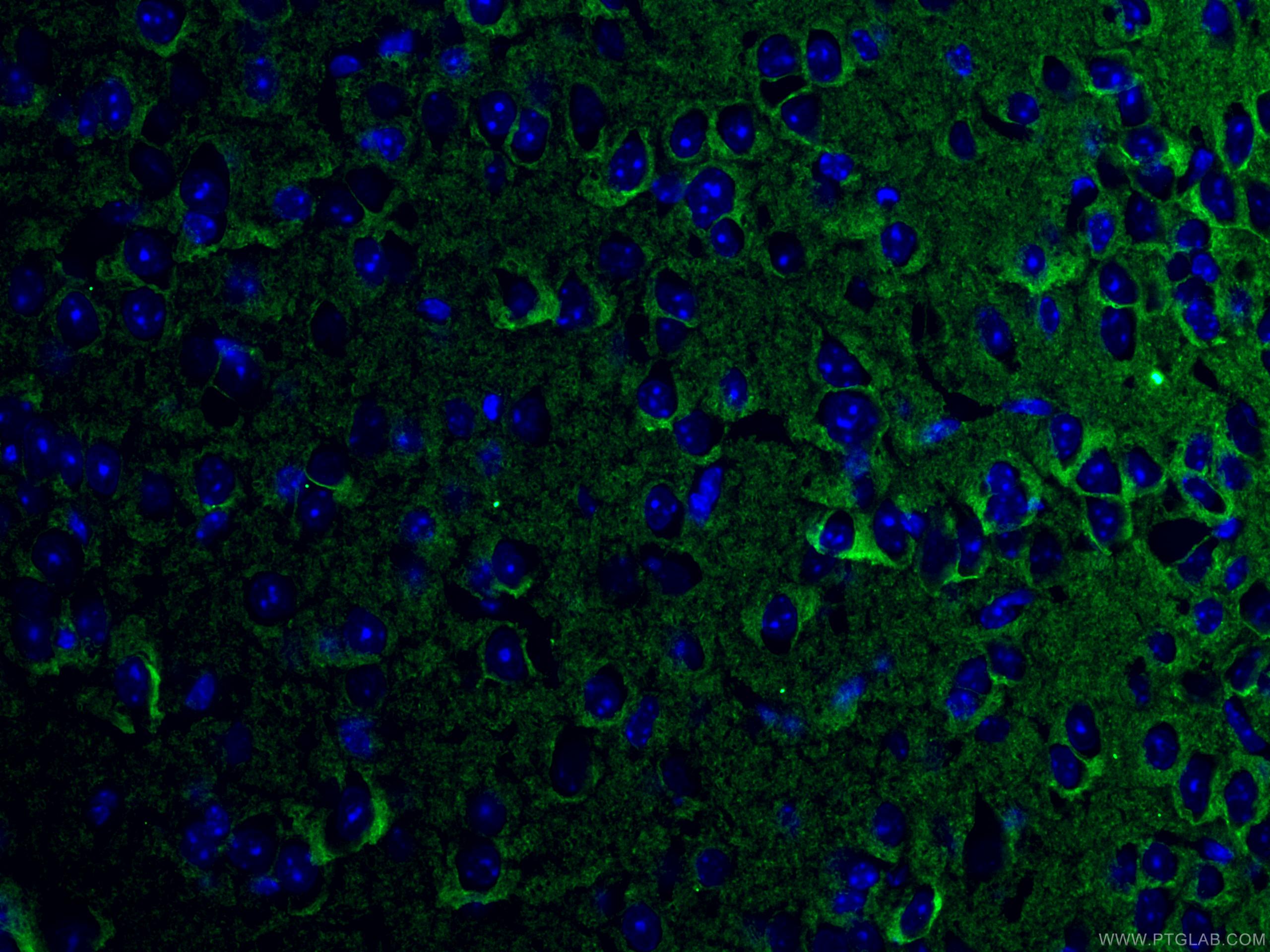ATP1A3 (C-terminal) Polyklonaler Antikörper
ATP1A3 (C-terminal) Polyklonal Antikörper für WB, IHC, IF-P, ELISA
Wirt / Isotyp
Kaninchen / IgG
Getestete Reaktivität
human, Maus, Ratte
Anwendung
WB, IHC, IF-P, ELISA
Konjugation
Unkonjugiert
Kat-Nr. : 10868-1-AP
Synonyme
Geprüfte Anwendungen
| Erfolgreiche Detektion in WB | C2C12 cell, C2C12-Zellen, Maushirngewebe |
| Erfolgreiche Detektion in IHC | humanes Prostatakarzinomgewebe, humanes Cerebellum-Gewebe, Maushirngewebe, Maus-Skelettmuskelgewebe Hinweis: Antigendemaskierung mit TE-Puffer pH 9,0 empfohlen. (*) Wahlweise kann die Antigendemaskierung auch mit Citratpuffer pH 6,0 erfolgen. |
| Erfolgreiche Detektion in IF-P | Maushirngewebe |
Empfohlene Verdünnung
| Anwendung | Verdünnung |
|---|---|
| Western Blot (WB) | WB : 1:500-1:3000 |
| Immunhistochemie (IHC) | IHC : 1:50-1:500 |
| Immunfluoreszenz (IF)-P | IF-P : 1:50-1:500 |
| It is recommended that this reagent should be titrated in each testing system to obtain optimal results. | |
| Sample-dependent, check data in validation data gallery | |
Veröffentlichte Anwendungen
| WB | See 5 publications below |
| IHC | See 2 publications below |
Produktinformation
10868-1-AP bindet in WB, IHC, IF-P, ELISA ATP1A3 (C-terminal) und zeigt Reaktivität mit human, Maus, Ratten
| Getestete Reaktivität | human, Maus, Ratte |
| In Publikationen genannte Reaktivität | human, Maus |
| Wirt / Isotyp | Kaninchen / IgG |
| Klonalität | Polyklonal |
| Typ | Antikörper |
| Immunogen | ATP1A3 (C-terminal) fusion protein Ag1313 |
| Vollständiger Name | ATPase, Na+/K+ transporting, alpha 3 polypeptide |
| Berechnetes Molekulargewicht | 113 kDa |
| Beobachtetes Molekulargewicht | 100-113 kDa |
| GenBank-Zugangsnummer | BC015566 |
| Gene symbol | ATP1A3 |
| Gene ID (NCBI) | 478 |
| Konjugation | Unkonjugiert |
| Form | Liquid |
| Reinigungsmethode | Antigen-Affinitätsreinigung |
| Lagerungspuffer | PBS with 0.02% sodium azide and 50% glycerol |
| Lagerungsbedingungen | Bei -20°C lagern. Nach dem Versand ein Jahr lang stabil Aliquotieren ist bei -20oC Lagerung nicht notwendig. 20ul Größen enthalten 0,1% BSA. |
Hintergrundinformationen
ATP1A3 participates in the catalyticing hydrolysis of ATP and the exchanging of sodium and potassium ions across plasma membrane. The catalyticing activity mode is ATP + H2O + Na+(In) + K+(Out) = ADP + phosphate + Na+(Out) + K+(In). It has been published that the neurologic disorders rapid-onset dystonia-parkionsonism (RDP), alternating hemiplegia of childhood (ACH) and CAPOS syndrome (cerebellar ataxia, areflexia, pes cavus, optic atrophy and sensorineural hearing loss) are all related with the mutation of ATP1A3. There are other reports suggest that early life epilepsy and episodic apnea revealing are potentially associated with the mutation of ATP1A3 as a result of impairment of Na+/K+ homeostasis. This antibody is generated against the C-terminal region (665-1013aa) of ATP1A3 and detects the band around 100-113 kDa in SDS-PAGE.(PMID: 30097153, 20301294, 29922587)
Protokolle
| PRODUKTSPEZIFISCHE PROTOKOLLE | |
|---|---|
| WB protocol for ATP1A3 (C-terminal) antibody 10868-1-AP | Protokoll herunterladen |
| IHC protocol for ATP1A3 (C-terminal) antibody 10868-1-AP | Protokoll herunterladenl |
| IF protocol for ATP1A3 (C-terminal) antibody 10868-1-AP | Protokoll herunterladen |
| STANDARD-PROTOKOLLE | |
|---|---|
| Klicken Sie hier, um unsere Standardprotokolle anzuzeigen |
Publikationen
| Species | Application | Title |
|---|---|---|
Front Oncol Elevated Sodium Pump α3 Subunit Expression Promotes Colorectal Liver Metastasis via the p53-PTEN/IGFBP3-AKT-mTOR Axis. | ||
Cancer Cell Int Comprehensive analysis of the expression of sodium/potassium-ATPase α subunits and prognosis of ovarian serous cystadenocarcinoma. | ||
Life Sci Identification of a robust scoring system based on metabolic genes followed by in-depth validation of ATP1A3 in glioma | ||
Acta Neuropathol Commun Bridging the gap: investigating the role of phosphorylation at the serine 129 site of α-synuclein in VAPB-PTPIP51 interactions | ||
Invest Ophthalmol Vis Sci Proliferator-Activated Receptor Alpha Inhibits Abnormal Extracellular Matrix Accumulation and Maintains Energy Metabolism in Late-Onset Fuchs Endothelial Corneal Dystrophy | ||
Adv Sci (Weinh) Calhm6 Governs Macrophage Polarization Through Chp1-Camk4-Creb1 Axis and Ectosomal Delivery in Inflammatory Responses |
